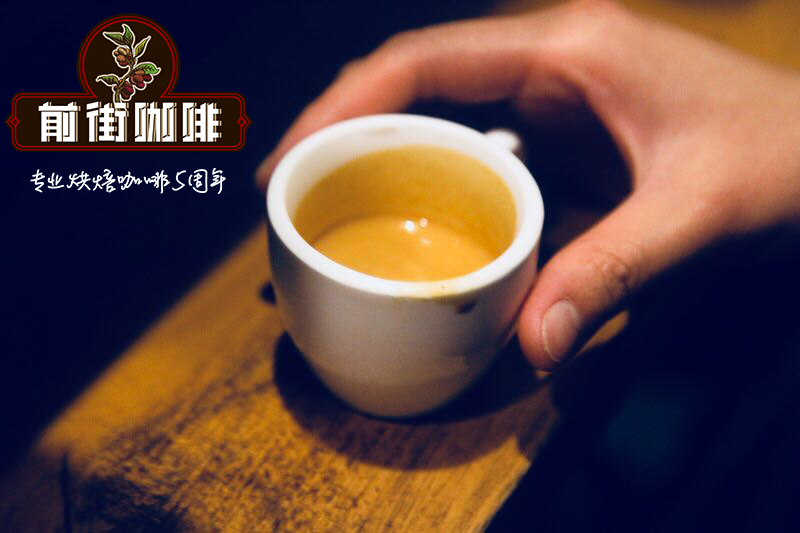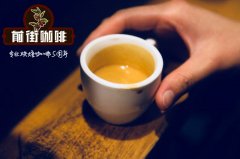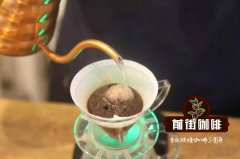Description of coffee flavor characteristics of Salvadoran coffee planting and production areas of coffee
Salvadoran coffee refers to the coffee produced in the small South American country of El Salvador, where the coffee body is light, aromatic, pure, slightly sour, the flavor is extremely balanced, is a specialty of Central America. With sour, bitter, sweet and other taste characteristics, the best baking degree is moderate, deep.
In the early 1990s, guerrilla warfare greatly damaged the country's national economy, reducing coffee production from 3.5 million bags in the early 1970s to 2.5 million bags in 1990-1991. The eastern part of the country was most affected by guerrilla warfare, and many farmers and workers were forced to leave the manor. The shortage of funds has led to a sharp drop in coffee production, from 1200 kg per hectare in the past to less than 900kg per hectare today.
In addition, Zhengfu imposed an additional 15% tariff on exported coffee in 1986, that is, an additional 15% in addition to the existing 30% tax. Taxes, together with unfavorable exchange rates, have greatly reduced the export of coffee and the quality of coffee.
Zhengfu finally realized the great role of coffee in the national economy, such as solving employment, earning foreign exchange and developing agricultural production, so it privatized part of the coffee export industry in 1990, hoping to increase the income rate of coffee in the export market.
Today, this coffee accounts for 40% of the country's exports. The best quality coffee is exported from January to March, and 35% of the extra hard beans are exported to Germany.
Coffee variety
The civil war caused chaos and affected economic development, but ironically allowed the ancient coffee to be preserved, and the situation was so chaotic that coffee producers in El Salvador failed to catch up with the renewal of coffee varieties in Central and South America. The artificial breeding variety of ragogipe (or maragogype) was first bred in 1958 (1954).
Pacamara species is a rare artificial breeding of excellent varieties, blue is better than blue, perfectly inheriting the advantages of the mother plant, both the excellent taste of pacas species, raw bean granules also inherited the large size of malagogipe. The Pacamara species is thought to be the result of the pursuit of large Arabica species.
Coffee planting
Most of them are planted by small farmers.
Grading of farmers in El Salvador: (1 htct= 105mu = 10000 square meters)
Small farmers, small producer, area less than 7.0hect
Medium-sized peasant household, medium producer, area between 7. 0-70hect
Large farmers, large producer, the area is larger than 70hect.
Farmers use traditional planting methods, with almost 100% shade planting.
Coffee harvest
Pick by hand.
The harvest season lasts from October to March.
The peak occurs from November to February.
Coffee treatment
Washing treatment, sun drying.
Coffee export
Raw beans are exported throughout the year, and raw beans are stored in the warehouse in the form of shelled beans.
Coffee producing area
Seven of the country's 14 provinces produce coffee, with the largest number in the provinces of chalatenango and santa ana.
Geographically, it is mainly distributed in the north and south mountain systems, with the land bordering Guatemala and Honduras in the north and a large number of volcanoes along the Pacific coastline in the south.
El Salvador divides the producing area into six mountain systems
Charat Nango production area is famous for its outstanding performance in coe events this year. A few years ago, chalatenango was unknown, and some farmers in the area began to grow Pacamara in the 1990s. In 2006, a small farm in the region played in coe with pacamara and won the runner-up in the race with a fascinating flavor. In 2007, several farms in the area took part in the competition with pacamara. As a result, they won the first, third and fourth places, and became famous in the pacamara of chalatenango and ta. The producing area is located in the Altotepec Metagan mountain system in the north, which is the purple area at the top of the image above.
Flavor and quality of coffee
El Salvador is a producer of high-quality commercial Arabica beans and is famous for its strict and effective quality control.
Since 2003, he has joined the COE competition.
With excellent ancient coffee, successfully entered the boutique coffee market.
Coffee flavor is related to the microclimate of the producing area. On the whole, Salvadoran coffee inherits the mild quality of Central American coffee. It is soft, slightly sour and has beautiful sweetness, so it is suitable for blending.
Boutique Salvadoran coffee can also be impressive, including some pacamara varieties, which show active acidity, layered and deep taste, and long

Important Notice :
前街咖啡 FrontStreet Coffee has moved to new addredd:
FrontStreet Coffee Address: 315,Donghua East Road,GuangZhou
Tel:020 38364473
- Prev

What is the development of small-grain coffee and its coffee history
Small grain coffee, also known as Arabica (Arabica), originated in Ethiopia, improved and cultivated from the Arabian Peninsula, is the most primitive and traditional Arabica coffee variety. Characteristics of native small-grain coffee: granules
- Next

How does Jamaica Blue Mountain Coffee taste? The difference between Jamaica Blue Mountain Coffee and Blue Mountain Blend
Weixin Official Accounts cafe_style Blue Mountains Located in Central America, Jamaica Jamaica is an island surrounded by the Caribbean Sea. When the weather is clear, as long as the sun shines directly on the blue sea, the Blue Mountains will reflect the blue light of the sea.
Related
- Detailed explanation of Jadeite planting Land in Panamanian Jadeite Manor introduction to the grading system of Jadeite competitive bidding, Red bid, Green bid and Rose Summer
- Story of Coffee planting in Brenka region of Costa Rica Stonehenge Manor anaerobic heavy honey treatment of flavor mouth
- What's on the barrel of Blue Mountain Coffee beans?
- Can American coffee also pull flowers? How to use hot American style to pull out a good-looking pattern?
- Can you make a cold extract with coffee beans? What is the right proportion for cold-extracted coffee formula?
- Indonesian PWN Gold Mandrine Coffee Origin Features Flavor How to Chong? Mandolin coffee is American.
- A brief introduction to the flavor characteristics of Brazilian yellow bourbon coffee beans
- What is the effect of different water quality on the flavor of cold-extracted coffee? What kind of water is best for brewing coffee?
- Why do you think of Rose Summer whenever you mention Panamanian coffee?
- Introduction to the characteristics of authentic blue mountain coffee bean producing areas? What is the CIB Coffee Authority in Jamaica?

